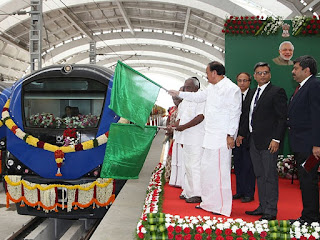The Department of Public Works and Highways has launched a portal that will consolidate job opportunities under the government’s Build Build Build program, where at least 11,000 job openings have been posted.
Public Works Secretary Mark Villar said the online jobs site aims to merge all employment opportunities from all concessionaires and construction companies involved in the government’s flagship infrastructure program.
“The ‘Jobs, Jobs, Jobs’ Portal will serve as a job matching platform between potential employers and employees as the government moves to complement its “Build, Build, Build” infrastructure initiatives with more job opportunities for Filipinos,” Villar said.
“The new portal will enhance our goal of reaching Filipinos here and abroad to join the government’s infrastructure push,” Transport Secretary Arthur Tugade added.
The online portal aims to create more jobs for Filipinos, address the demand for workers to ensure fast and timely delivery of BBB projects, encourage returning overseas Filipino workers to remain in the country and encourage more overseas workers to return home.
Before the launch, NLEX Corp. senior vice president for Tollways Development and Engineering Raul Ignacio and vice president for Project Management Nemesio Castillo led the inspection of the NLEX Harbor Link Segment 10, one of the projects under the BBB program.
Castillo said the “project’s progress at the Karuhatan to C3 section now stands at 70 percent, with projected completion seen by October 2018, while the C3 to R10 section is expected to open by the fourth quarter of 2019.”
“NLEX Harbor Link Segment 10 is an 8.25-kilometer elevated expressway traversing the NLEX from Karuhatan, Valenzuela City, passing through Malabon City, Caloocan City and extending to R-10 in Dagat-Dagatan, Navotas City,” Villar added.
In the House, Camarines Sur Rep. Luis Raymund Villafuerte expressed hope that Congress will soon enact a law that will encourage employers to allow their employees to work from home.
House Bill 7402, also known as the telecommuting bill, was consolidated and approved on third and final reading on Monday by a vote of 239-0.
Villafuerte, principal author of the bill, said the telecommuting bill that will also help ease the worsening traffic congestion in urban centers as this would clear the way for flexi-work that is fast becoming the norm in many business process outsourcing companies.
“This is the future of work. As we enter the era of rapid technology-driven innovations, we should be prepared to take advantage of its many positive benefits. Implementing flexible work schedules that allow work-from-home arrangements is among these benefits,” said Villafuerte.
The consolidated measure incorporates Villafuerte’s original bill, HB 5630, which institutes such work-from-home arrangements.
Villafuerte said another advantage of work-from-home arrangements is that it will boost the capability of employers to hire talent that they could otherwise not tap because of location restrictions.
“With telecommuting, companies that, say are based in Metro Manila or Central Luzon, can hire highly skilled employees even if they live as far as Davao,” he said.
“Companies should start rethinking the way they measure the quality and quantity of work rendered by their employees. Putting in hours at the office doesn’t necessarily mean increased productivity. Working from home could accomplish the same results done at the office in less time,” Villafuerte said.
Villafuerte’s proposal, which was included in the consolidated measure, ensures that work-from-home employees get fair treatment, by compelling employers to provide them the same workload and performance standards, regular and overtime pay rates, extra monetary benefits, access to training and career growth opportunities, and collective rights being received by others working in their respective employers’ premises.
Villafuerte proposed that the Department of Labor and Employment establish a three-year pilot program for telecommuting or work-from-home arrangements in select local industries with the goal of profiling and evaluating how this policy can be effective and tailored to fit the needs of both employers and employees.
In the Senate, Senator Paolo Benigno Aquino IV has filed a bill calling for a rollback on the excise tax on fuel imposed by the Tax Reform for Acceleration and Inclusion Law to help workers cope with rapidly rising prices.
“The workers and the other sectors are now asking help. Let us act and roll back the excise tax on petroleum products,” Aquino said. “A suspension in 2019 is too late.”
He was referring to a move to suspend the excise tax on fuel beginning in 2019, which is allowed under the TRAIN Law.
The government, Aquino noted, must admit the problems caused by the tax reform program and find ways to lower prices of goods and services by rolling back the excise tax.
Aquino’s bill would roll back excise taxes once inflation surpasses the annual target rate over a three-month period.

